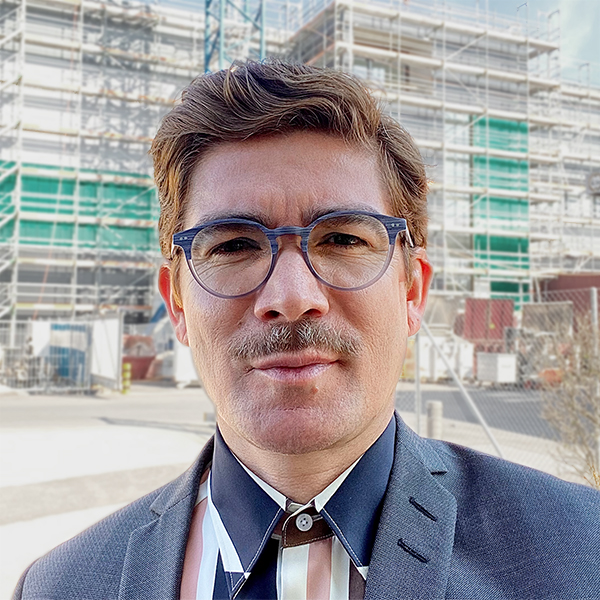No content results match your keyword.
Content
You have successfully logged out.
Not registered yet?
Sustainability stories
In Sempach, Switzerland, B. Braun is building a new production facility for disinfectant products. The plant is a flagship project in terms of sustainability. All the heating for production and buildings is generated CO2-neutrally.
The COVID-19 pandemic has caused disinfectant consumption to skyrocket. B. Braun reacted: within a year, capacity in Sempach was increased by 25 percent - partly by outsourcing soap production. But above all, the corona-related shortage of disinfectants accelerated a decision that had been pending at B. Braun for some time: that the Infection Control Competence Center at the Sempach site would be expanded and the production facility completely rebuilt. N.I.C.O., “New Infection Control Operations”, the name of the new factory, will be operational in 2023. What’s special about this plant is that all the heat required for production and heating will be generated sustainably.
As a family business, B. Braun always had future generations in mind. For decades, B. Braun has distinguished itself with its intelligent and economical use of resources. With its sustainability approach, the company intend to continue setting ambitious goals in this area - always with an eye on protecting and improving the health of people around the world. A key element of this is to plan all new B. Braun production buildings to be largely CO2-neutral in the future. At this point, the earth under Sempach comes into play.
With a focus on responsible climate protection, B. Braun aims to reduce CO2 emissions by 50% by 2030 compared to 2021 while continuing to prioritize the health of people worldwide through resource-conscious practices.
However, in the case of large factories - N.I.C.O. has an area of more than 9,000 square meters - heat supply by geothermal energy takes place on a different scale. “Primary power generation is made possible using 31 geothermal probes. In simple terms, these can be thought of as 200-meter-deep holes which we shoot water into then we pump it back up,” says De Mesquita. The water is heated by only a few degrees; it is pumped in at a temperature of approximately zero degrees, and comes up at 3.5 degrees. But how do you extract heat from this very cold water?
The secret lies in heat pumps. This system allows even small temperature differences - such as those between zero and 3.5 degrees - to be accumulated and exploited. One device alone would not get you very far, the special feature of N.I.C.O. is that a highly complex heat circulation system is installed in the plant. “There are three large tanks where we can store 90,000 gallons of water each at 90, 50, and 14 degrees. In addition, there is a huge latent or ice storage tank that can hold up to 300,000 liters of ice,” explains De Mesquita.
The last point requires special explanation for laypersons. How can energy be stored in ice? Again, the answer is in the temperature difference. During the phase change from ice to liquid water, a lot of energy is released that can be harnessed using heat pumps.

A highly efficient circulation system: cold water is pumped into deep layers of the earth, heated to a high temperature, and then cooled and returned to the earth’s interior after the heat has been utilized.
/
31 probes embedded in the earth tap the heat stored in the ground at a depth of 200 meters and transport it to the surface via heat pumps for further use.
/
Three large water tanks with a total capacity of 270,000 liters store the water heated by geothermal energy, cooling and waste water.
/
The 300,000 liter ice storage tank stores heat in cold water. This energy is generated during the phase transition of water from the solid to the liquid state of aggregation.
/
The same applies to waste heat; for example, from waste water from washing systems or from air conditioning systems - this is collected via heat pumps and fed back into the system.” All this means that the plant can be operated with a completely sustainable energy supply - namely, using the geothermal probes. “We designed the plant to be as sustainable as possible,” says De Mesquita. “That means we think of everything in terms of circulation. This way, we will also return the excess heat to the ground, so that our source is not depleted, but is constantly regenerated.”
The smart use of heat is just one of the benefits of redesigning a production facility. Another is that the actual production can be laid out in a particularly ergonomic way. “For one thing, we were now able to make production completely linear,” explains André Schaller. “Raw materials arrive at one end of the factory, are then processed, and finished products leave the building at the other end.” And, in N.I.C.O., the flow of materials and the flow of people will be separate. “Individual employees only have access to the production steps in which they are directly involved. This increases both the safety in production, and for the employees,” says Schaller.

“With N.I.C.O., we are showing that B. Braun is taking responsibility for climate protection. With the energy generation concept using the heat pump, we will save around 100,000 liters of heating oil per year at the Sempach production site alone.”
De Mesquita is eager to see how N.I.C.O will actually work. “Our planning is based on projections, of course. We calculate to the nearest kilowatt, but it is also clear that the exact figures will only become apparent during ongoing operation. But I am confident. Compared with current production, we expect energy savings of 20 to 30 percent – so we will save around 100,000 liters of heating oil per year. This is also a considerable economic factor.”
Your feedback matters! Participate in our customer survey to help us enhance our website, products and services. Thank you for your support!